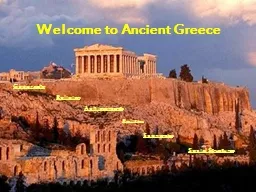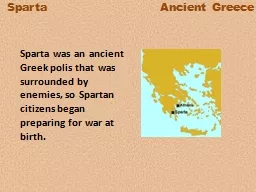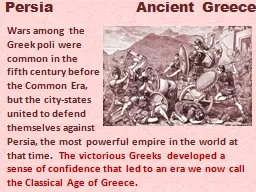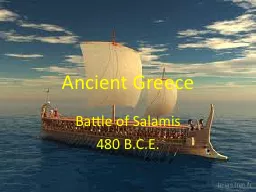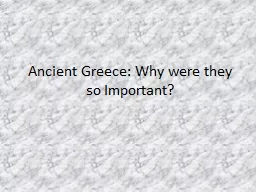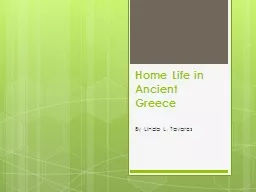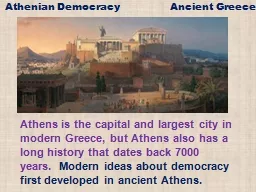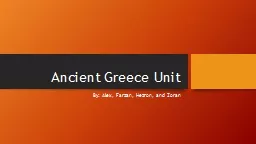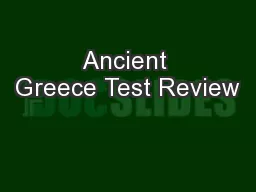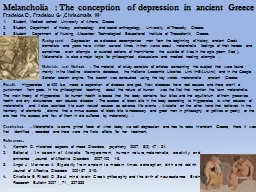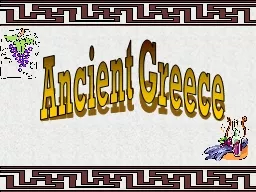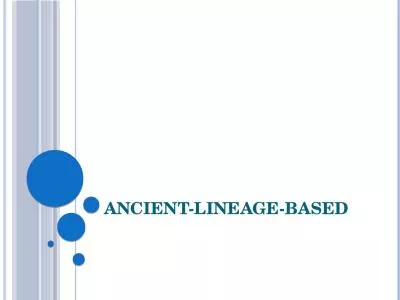PPT-Welcome to Ancient Greece
Author : cheryl-pisano | Published Date : 2018-10-28
Religion Politics Economics Social Structures Geography Achievements 800700 BC Monarchies begin to be replaced by Aristocratic Republics Archaic Period 800 BC
Presentation Embed Code
Download Presentation
Download Presentation The PPT/PDF document "Welcome to Ancient Greece" is the property of its rightful owner. Permission is granted to download and print the materials on this website for personal, non-commercial use only, and to display it on your personal computer provided you do not modify the materials and that you retain all copyright notices contained in the materials. By downloading content from our website, you accept the terms of this agreement.
Welcome to Ancient Greece: Transcript
Download Rules Of Document
"Welcome to Ancient Greece"The content belongs to its owner. You may download and print it for personal use, without modification, and keep all copyright notices. By downloading, you agree to these terms.
Related Documents

